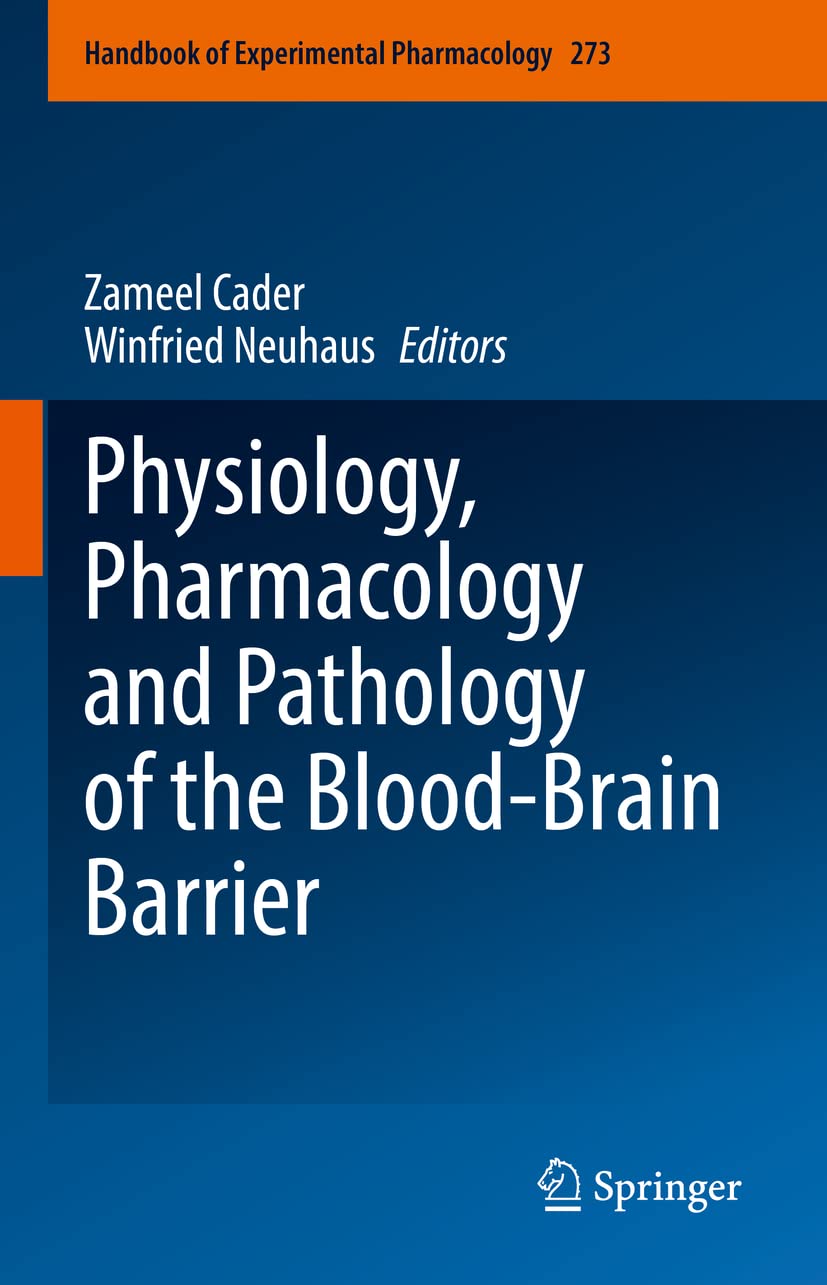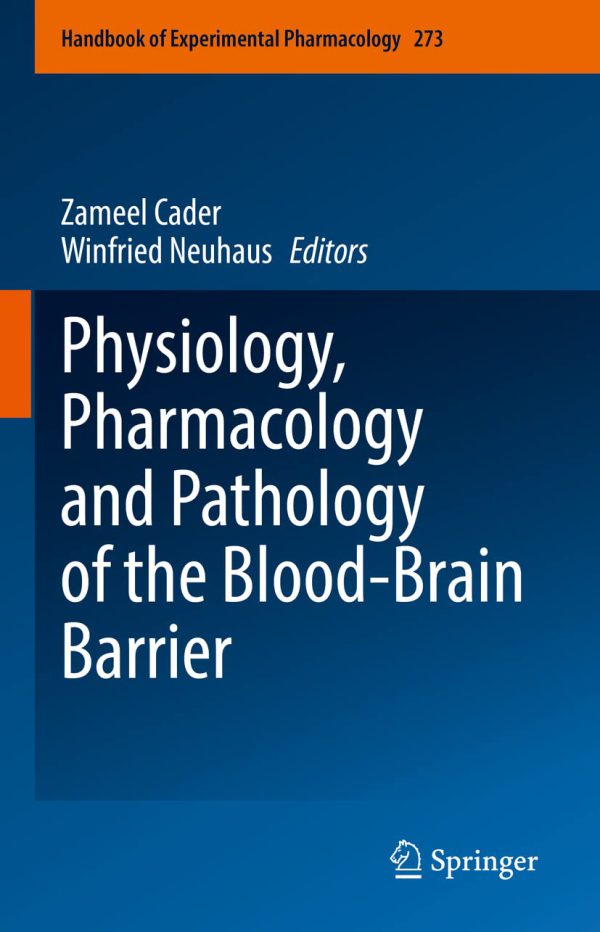فیزیولوژی، فارماکولوژی و آسیب شناسی سد خونی مغزی ۲۰۲۲
Physiology, Pharmacology and Pathology of the Blood-Brain Barrier 2022
دانلود کتاب فیزیولوژی، فارماکولوژی و آسیب شناسی سد خونی مغزی ۲۰۲۲ (Physiology, Pharmacology and Pathology of the Blood-Brain Barrier 2022) با لینک مستقیم و فرمت pdf (پی دی اف)
| نویسنده |
Winfried Neuhaus, Zameel Cader |
|---|
| تعداد صفحهها |
364 |
|---|---|
| نوع فایل |
|
| حجم |
8 Mb |
| سال انتشار |
2022 |
89,000 تومان
معرفی کتاب فیزیولوژی، فارماکولوژی و آسیب شناسی سد خونی مغزی ۲۰۲۲
این کتاب مجموعه ای جامع از دانش فعلی و تحقیقات پیشگامانه در مورد سد خونی مغزی را ارائه می دهد. این فصل ها در چهار بخش اصلی سازماندهی شده اند که اطلاعات پس زمینه و بینش جدیدی در مورد فیزیولوژی سد خونی مغزی، چالش های مربوط به یافتن و توسعه داروهایی که از سد خونی مغزی عبور می کنند، روش های تجربی برای مطالعه سد خونی مغزی، و نقش سد خونی مغزی در مکانیسم های بیماری و پیامدهای توسعه دارو. در بخش اول، خوانندگان ساختار، عملکرد و جنبه های رشدی سد خونی مغزی را کشف خواهند کرد و بینش جدیدی در مورد پیچیدگی و عملکرد واحد عصبی عروقی و متابولیسم انرژی در سلول های اندوتلیال مغز به دست خواهند آورد. فصل های قسمت دوم بر چالش های انتقال از نیمکت به کنار تخت در توسعه داروی CNS تمرکز دارند، اهمیت درک توزیع مغزی داروها مرتبط با اثربخشی آنها را برجسته می کنند، ملاحظات فارماکوکینتیک کلی برای داروهای CNS را روشن می کنند و به روز و به روز ارائه می کنند. اطلاعات جدید استراتژی های دارورسانی برای غلبه بر سد خونی مغزی بخش تجربی کتاب مدل های ریاضی و آزمایشگاهی و همچنین روش های حیوانی و انسانی در تحقیقات سد خونی مغزی را پوشش می دهد. تاکید ویژه بر توصیف روش ها، نقش تفاوت های گونه ها برای تفسیر داده ها، مدل های جدید مبتنی بر سلول های بنیادی انسانی با پتانسیل پزشکی شخصی سازی شده و ملاحظات فنی و نکات مفید برای خوانندگان علاقه مند به کار با این مدل ها است. در قسمت چهارم، توجه ویژه ای به سد خونی مغزی، تغییرات آن و درگیری آن در طول پیشرفت بیماری شده است. فصل ها تغییرات سد خونی مغزی را که در اختلالات رایجی مانند بیماری آلزایمر، مولتیپل اسکلروزیس، سکته مغزی، آسیب های مغزی، صرع و تومورهای مغزی یافت می شوند، خلاصه می کنند. درمان های موجود مورد بحث قرار خواهد گرفت و پیامدهای روش های درمانی جدید که نیاز به دور زدن سد خونی مغزی دارند، مورد بررسی قرار خواهند گرفت. علاوه بر این، کارشناسان درباره این سوال بحث می کنند که چگونه تغییرات در سد خونی مغزی به طور علّی با پیشرفت بیماری مرتبط است و بنابراین می تواند به عنوان اهداف درمانی عمل کند. این مجموعه به گونه ای طراحی شده است که خوانندگان گسترده ای از دانشجویان از دانشمندان پایه و کاربردی گرفته تا فارماکولوژیست ها، پزشکان و ذینفعان صنعت داروسازی و امور نظارتی را به خود جلب کند. این کتاب به دلیل محتوای جامعی که دارد می تواند به یک اثر استاندارد در زمینه تحقیقات سد خونی مغزی تبدیل شود.
This book presents a comprehensive collection of current knowledge and leading research about the blood-brain barrier. The chapters are organized in four main parts providing basic information and novel insights about the physiology of the blood-brain barrier, the challenges related to finding and developing drugs crossing the blood-brain barrier, experimental methods to study the blood-brain barrier and the role of the blood-brain barrier in disease mechanisms and its consequences for drug development. In the first part the readers will discover the structure, function and developmental aspects of the blood-brain barrier and gain novel insights into the complexity and functionality of the neurovascular unit and energy metabolism of brain endothelial cells. Chapters of the second part focus on translational challenges from the bench to the bedside in CNS drug development, shed light on the importance to understand the brain distribution of drugs related to their efficacy, elaborate on general pharmacokinetic considerations for CNS drugs and introduce current and novel drug delivery strategies to overcome the blood-brain barrier. The experimental part of the book covers mathematical and in vitro models as well as animal and human methods in blood-brain barrier research. Specific emphasis is set on the description of the methods, the role of species differences for data interpretation, novel human models based on stem cells with the potential for personalized medicine and technical considerations and tips helpful for readers interested in working with these models. In the fourth part particular attentions is given to the blood-brain barrier, its changes and participation during disease progression. Chapters summarize alterations of the blood-brain barrier that are present in common disorders such as Alzheimer’s disease, multiple sclerosis, stroke, traumatic brain injury, epilepsy and brain tumors. Present therapies will be discussed and the consequences for novel treatment approaches that need to bypass the blood-brain-barrier will be explored. In addition, experts discuss the question in how far changes at the blood-brain barrier are causally linked to disease progressions and consequently could serve as therapeutic targets. This collection is designed to appeal to a wide readership from students through basic and applied scientist to pharmacologists, medical doctors and stakeholders from the pharmaceutical industry and regulatory affairs. Due its comprehensive content the book has the potential to become a standard work in the field of blood-brain barrier research.





